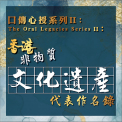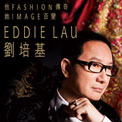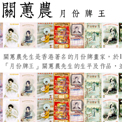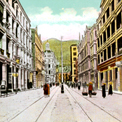-
History & Society
- Education in Pre-war Hong Kong
- History of Taikoo Sugar Refinery
- Hong Kong Products Exhibition
- Local Festivals Around the Year
- Post-war Industries
- Pre-war Industry
- The Hong Kong Jockey Club Archives
- Tin Hau Festival
- Memories We Share: Hong Kong in the 1960s and 1970s
- History in Miniature: The 150th Anniversary of Stamp Issuance in Hong Kong
- A Partnership with the People: KAAA and Post-war Agricultural Hong Kong
- The Oral Legacies (I) - Intangible Cultural Heritage of Hong Kong
- Hong Kong Currency
- Hong Kong, Benevolent City: Tung Wah and the Growth of Chinese Communities
- The Oral Legacies Series II: the Representative List of the Intangible Cultural Heritage of Hong Kong
- Braving the Storm: Hong Kong under Japanese Occupation
- A Century of Fashion: Hong Kong Cheongsam Story
Geography & EnvironmentArt & Culture- Calendar Posters of Kwan Wai-nung
- Festival of Hong Kong
- Ho Sau: Poetic Photography of Daily Life
- Hong Kong Cemetery
- Sketches by Kong Kai-ming
- The Culture of Bamboo Scaffolding
- The Legend of Silk and Wood: A Hong Kong Qin Story
- Journeys of Leung Ping Kwan
- From Soya Bean Milk To Pu'er Tea
- Applauding Hong Kong Pop Legend: Roman Tam
- 他 FASHION 傳奇 EDDIE LAU 她 IMAGE 百變 劉培基
- A Eulogy of Hong Kong Landscape in Painting: The Art of Huang Bore
- Imprint of the Heart: Artistic Journey of Huang Xinbo
- Porcelain and Painting
- A Voice for the Ages, a Master of his Art – A Tribute to Lam Kar Sing
- Memories of Renowned Lyricist: Richard Lam Chun Keung's Manuscripts
- Seal Carving in Lingnan
- Literary Giant - Jin Yong and Louis Cha
-
History & SocietyGeography & EnvironmentArt & Culture
-
View Oral History RecordsFeatured StoriesAbout Hong Kong Voices
-
Hong Kong MemoryA Century of Fashion: Hong Kong Cheongsam StoryRecently Visited
Summary: The Cultural Traits of the Hong Kong Cheongsam
Qipao, literally ‘Manchu robe’, refers to a particular type of traditional Chinese dress that first came into vogue in the 1920s. In Hong Kong, the same type of dress was more commonly known as the changshan, or ‘long dress’, a term that was habitually used in the Guangdong region to designate the long robe worn by Chinese men. In the 1920s, the English loanword cheongsam was derived from changshan, with the meaning extended to include women’s long robes, and this name was subsequently adopted by the general populace and the tailors who made this type of dress in Hong Kong.
The cheongsam tradition in Hong Kong originated in the changing fashion in mainland China. It has its roots in the May Fourth Movement in 1919, when female students began wearing men’s long robes, a trend that was further reinforced by the regulations promulgated by the Nationalist government in 1929 designating the cheongsam as formal wear. Conveniently called changshan or cheongsam, these dresses resembled a longer version of the shan (blouse or dress) commonly worn by Guangdong women. As a result of its initial association with the men’s robe, cheongsam is therefore a more suggestive term than qipao in indicating the origin of the tradition. It is loaded with deep cultural connotations.
While these dresses are known only by the name qipao in mainland China and Taiwan, cheongsam and qipao are still used interchangeably in Hong Kong. The name cheongsam carries a distinct Hong Kong flavour.
Copyright © 2012 Hong Kong Memory. All rights reserved.









